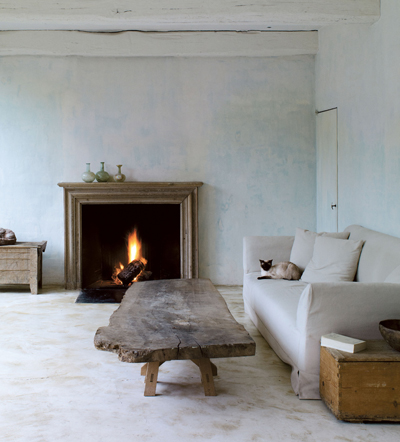
© Flammarion Publishing
I once saw a photo of Yves Saint-Laurent’s living room, and its cluttered opulence looked positively oppressing. Years later I discovered the Japanese aesthetic of wabi-sabi, and I found its regard for simplicity, sparseness, and the natural cycle of life refreshing. Wabi-sabi is lived-in beauty found in imperfection, the decay of all things, and the transience of all being, natural and unnatural. It prizes cracks in old vases, uneven texture of the ancient walls, and the withering of trees. It acknowledges the slow but intractable march of time, and in accepting it finds tranquility. Breathe in. Breathe out.
Like other things Eastern, and therefore exotic, wabi-sabi has often been bastardized by interior designers and their wealthy clientele. Axel Vervoordt, a Belgian art and antiques collector, could surely qualify as an impostor, but in his new book Wabi Inspirations ($65, Flammarion), he is careful to point out the sincerity of his interest in the unadorned and unassuming beauty of wabi-sabi (or simply wabi). The effort does indeed seem genuine and the gorgeous book is an important photographic document, since, despite wabi-sabi’s popularity, there is a dearth of its visual representation. The 255-page volume is a tour of properties redesigned by Vervoordt in the wabi spirit, often with the help of the Japanese-Belgian architect Tatsuro Miki. With their soft light and sparse interiors these spaces become sanctuaries. But it is the vividness of textures that really makes you want to run your hand over the photographs. Or just live in them.




 Facebook
Facebook Permalink
Permalink Digg
Digg Reddit
Reddit LinkedIn
LinkedIn StumbleUpon
StumbleUpon Tumblr
Tumblr

